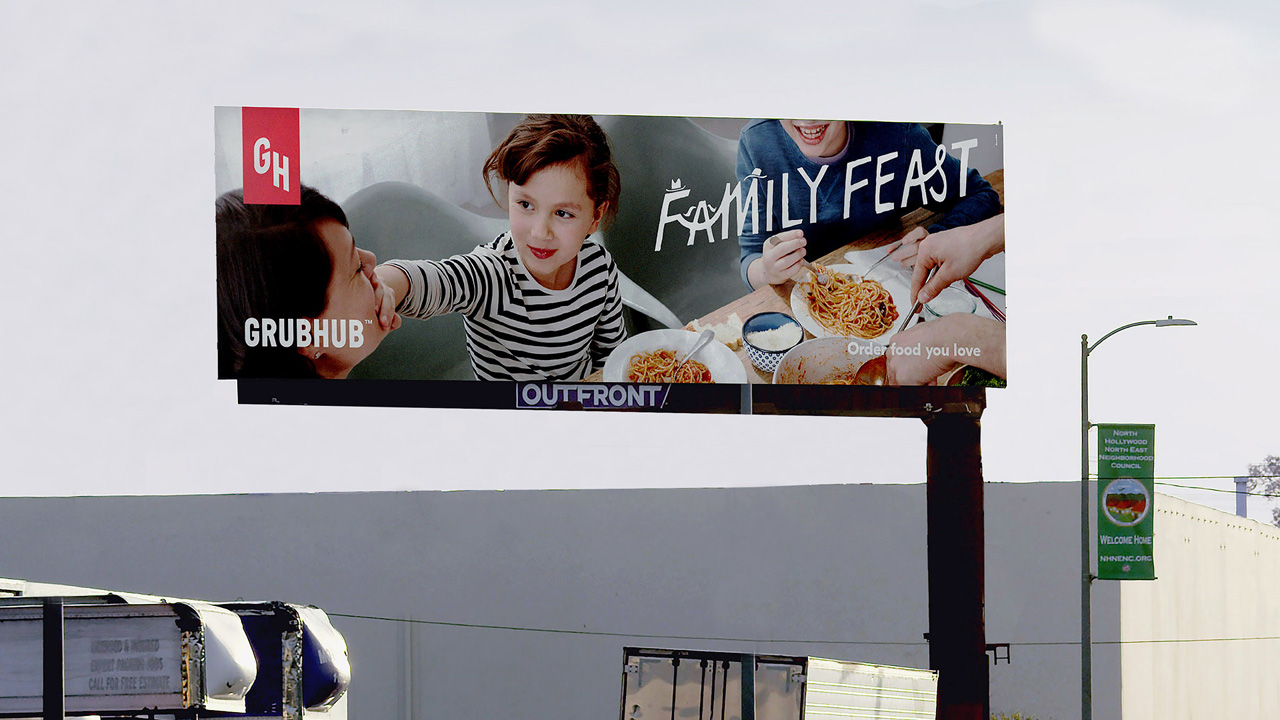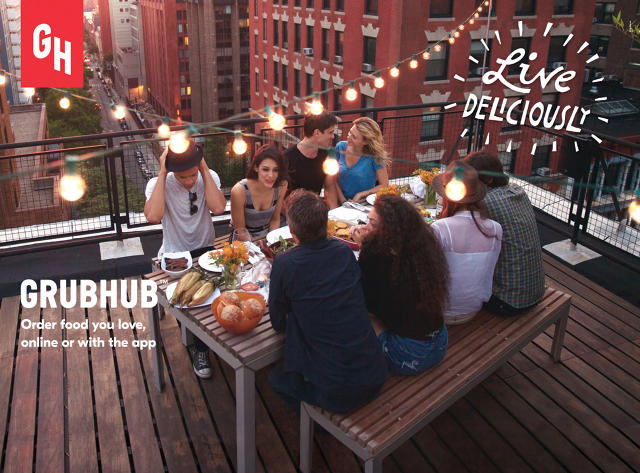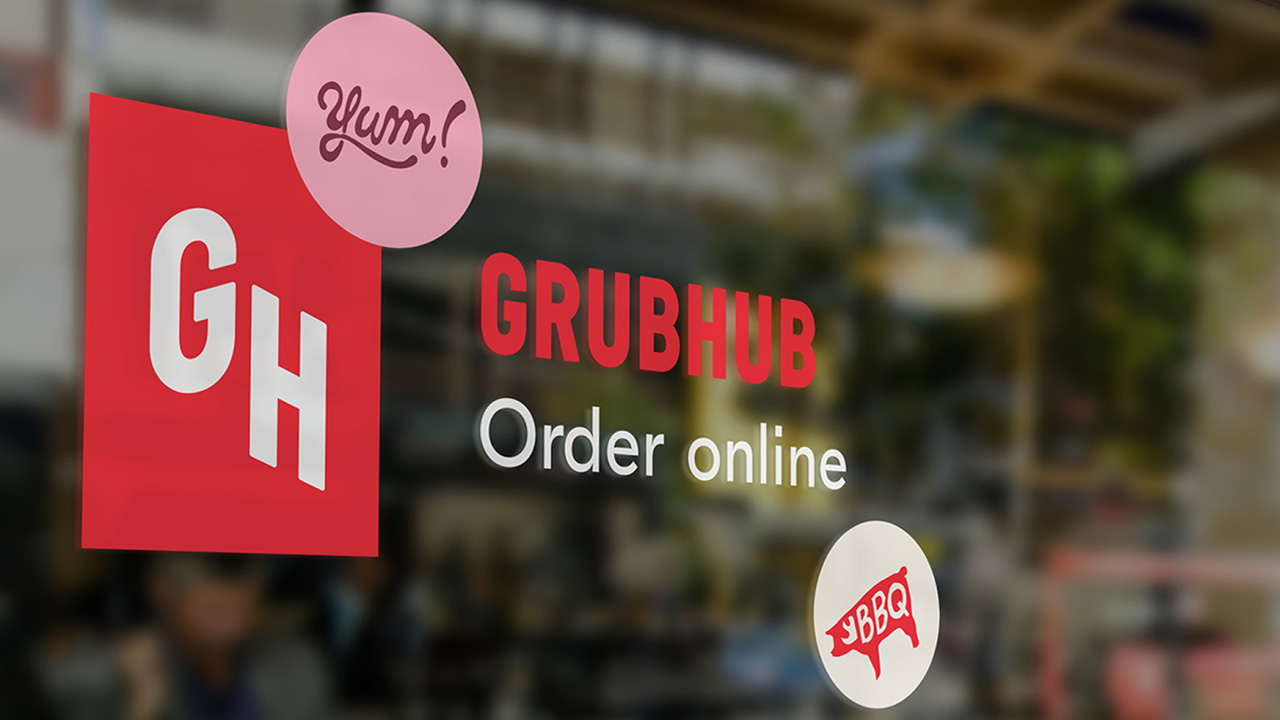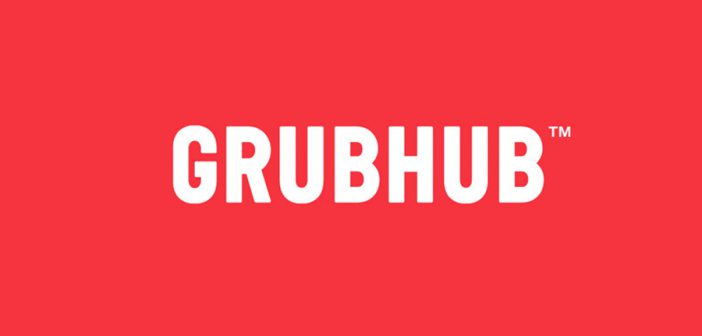Grubhub Rebrands As A Zesty Lifestyle Company
In 2004, Grubhub was a scrappy startup that offered an online alternative to paper menus for the college crowd. The company’s trademark became a few paper cutouts, scarfing mini burritos and pizzas like little dolls.
In 2016, it’s a publicly traded company that merged with its biggest competitor, Seamless, and aggressively bought out competitors like MenuPages and DiningIn. Seven million people order through Grubhub each month, but Grubhub wants more—a lot more—as the company points out that Internet and app orders represent just 5% of the entire takeout and delivery market (though NPD estimates that figure to be about 10 times higher).
So it was time for a rebrand—a rebrand that would help Grubhub speak to more than just stoned college students. A rebrand that was both universal and hyperlocal at the same time.
“Continuing to build a younger demo is important, but it’s equally important to fit into a variety of people’s lives to really capture the growth—to mean a lot of different things to different people,” says Barbara Martin Coppola, chief marketing officer of Grubhub. “Put yourself in the shoes of a very busy mom. If this person both has kids and works, this type of person is probably used to calling her favorite restaurant on the phone with a paper menu in her hand. But this person has a smartphone and is used to apps. It’s a matter of making our brand interesting enough to her to get her to try it.”
To rethink its approach, Grubhub hired the brand consultancy Wolff Olins. “Grubhub has always been a really fun brand,” says Lisa Smith, creative director and head of design at Wolff Olins. “It’s been irreverent, but it needed to be more empathic so that you could see yourself in that brand.”

So the designers turned to photography, replacing silly cartoons with shots of people eating—around the table with family, alone at work, wherever. These were universal images of a pleasant, often social, activity that we all love.
“Elevating the food as a universal experience that brings people together, and focusing on these moments that matter to diners—that is what we really want our products to be about,” says GrubHub CEO Matt Maloney. “And that increases engagement, I think, over time.”
It’s classic lifestyle branding, which is on-trend to the point of being cliched in the tech sector. Airbnb uses its commercials to promote images of travel and adventure rather than cheap rentable apartments. Apple frames the iPhone within the context of ramen shops rather than just showing us the old hero shots it did in the early iPod era.

“Obviously I’m very aware that everyone from Apple to Microsoft to tech brands as a whole are shifting to be much more lifestyle,” Smith says. “But I think what we really had to double down on was, we can and do use real people, we go behind the scene of real restaurants to meet real restaurateurs and chefs. We can’t afford at any point to be creating imaginary scenarios. Everything has to be real.”
Meanwhile, a new hand-drawn illustration style—rather than traditional typography—adds a quirky aesthetic to the photography that calls to mind food magazines such as Lucky Peach and Bon Appétit. “Illustration rather than straight-up typography felt richer, more textural, and more human,” Smith says. “Also playing on the sign language we see in restaurants. It was really about the diversity of everything.”

SCALING 44,000 RESTAURANTS AT A TIME
“Diversity.” It’s a tricky word for any lifestyle brand to adopt, because, after all, you’re presenting a vision of life and style to a very particular audience. That’s why all those Kickstarter videos feel like they’re made by the same 25- to 35-year-old white dude who lives in the Bay Area.
But to expand, GrubHub needs real diversity, the ability to penetrate hundreds of tiny markets. For this task, GrubHub isn’t just leaning on national branding campaigns. Instead, the company is evolving its own platform to be less about GrubHub and more about everything that’s inside GrubHub.
The answer is mostly photography, but of a different sort. Right now, if you search for pad thai on Grubhub, you’ll probably get a dozen Asian restaurants that offer the dish. The only difference between them might be the logo and user reviews. But restaurants are gradually gaining more control over how they appear on the service, with options to show photos of their own dishes, as well as the ability to create spontaneous menu items, like specials. This allows every restaurant within Grubhub to feel more unique, and for Grubhub itself to feel more diverse by nature.
“I think the old way of really trying to keep retainers within parameters of our display, it doesn’t let that life and vibrancy come out,” Maloney says. “We’re trying to work with them to allow them to differentiate [themselves]from all the other restaurants in the neighborhood.”

CREATING MORE BRAND THROUGH MORE MEANING
Grubhub’s current internal motto is “moving eating forward.” In an era when Grubhub is competing with a new wave of services, from Uber to Yelp’s Eat24 to David Chang’s Maple, that might sound like corporate lip service.
But as the brand continues to evolve, Coppola is taking the motto to heart, in all of its permutations. That includes the most literal interpretation of moving forward, actually carrying food to customer’s doorsteps, a task Grubhub is investing a lot of money in at the moment. It also includes food philosophy, and Grubhub’s own influence on the food its customers eat.
“What about nutrition? We have 7 million people eating on our site every day. We’re starting to think, what are the implications for us in the nutrition world? Another implication is sustainability. Imagine 7 million plastic bags every time a person orders,” Coppola says. “Since we started owning the end-to-end experience—we deliver the food for a large amount of restaurants now—we can have a collaboration with a restaurant to have a better solution.”
Nutrition labels? Controlled portion sizes? Compostable containers? Maybe in the future—for now, they’ve cut back on plastic bags. These might not seem like the most obvious touch points for a service born as a website. But for Grubhub, they are a way to do what the brand needs to do next: leverage 44,000 unique restaurants to create a universal food experience through Grubhub.
All Images: courtesy Wolff Olins
This article first appeared in


